Return to main VITA page for Boje
His newest book is Organizational Change and Global Standardization: Solutions to Standards and Norms Overwhelming Organizations.
The New Mexico Embodied Restorying Processes (ERP) Lab does work with veterans including the homeless veterans. ERP contributes to Material Storytelling by combining Little Wow Moments rediscovered from the past, and making new 'bets' of fore-seeing new ‘moments of vision’ of potential futures, and selecting a future to bring into actuality. Veterans are sometimes stuck repeating the past memories, and the Restorying is a way to move on to a 'New Story.' The New Mexico ERP Lab is also working with student veterans and their family members. ERP and Material Storytelling work are being combined with Equine Assisted Growth and Learning Events (EAGLE) using horses in work with veterans and their family members, followed by the sandtray work (https://davidboje.com/restorying).
Follow @davidboje on twitter.

Boje Family History pages (need password)
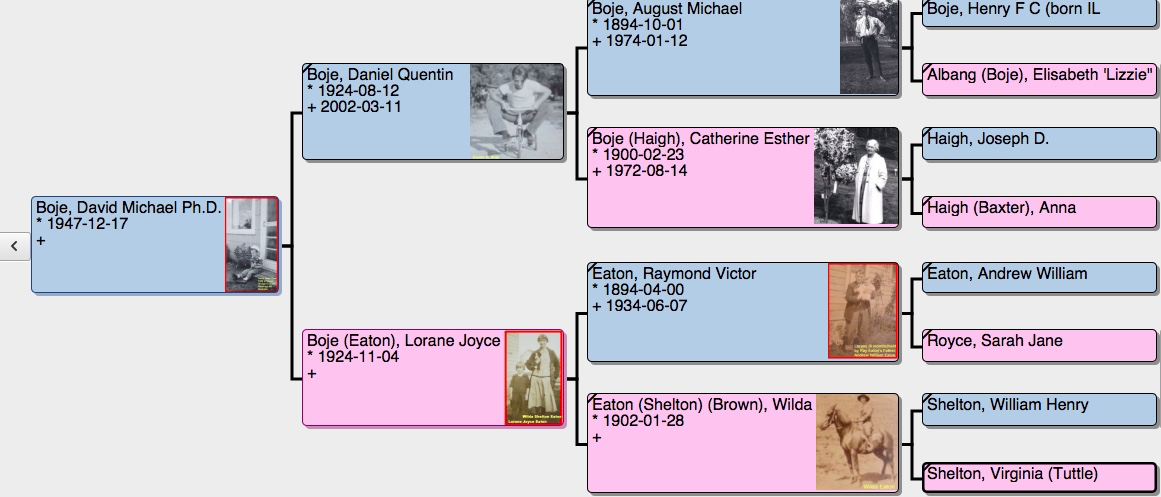
What is the Boje living story? My dad is descended from Boje's and Haigh's, with roots going back to Prussian Kingdom, once part of Denmark and Germany. My mother descended from Eatons and Sheltons, and they are England. I can trace thse lineages back, on my dad's side to Christopher Coist Boje (1838-1881) of Holstein married to Elvina Fritz (1848-1938), but then its unknown. On my mother's side it goes back to about 1750 with Jonas Haigh from England, Charles Shaw born about 1775, and William Roebottom about 1700 from Yorkshire. The oral storytelling of the living story, is more about recent ancestor's recollections. I notice that most all the family lines were farmers, until The farms of August Boje and Catherine Esther, and of Raymond Eaton & Wilda Brown (daughter of Shelton & Tuttle of Goldendale, WN) did cease to exist. Then parents I knew, had left farming behind, and tried to settle in the post-industrial wave of globalization. I would like to resist globalization, to tame it, with my indigenous farming, ancestral roots.
As of April 4, 2018, I just returned from New Zealand, where I learned about Kaupapa Maori (methodology & theory) of storytelling that is about developing a counter-position to US/European grand narratives, such as globalization. I am headed to Scotland next, where I was told by living story-tellers, I have Scottish roots. I can find only a distant relative from Ireland (Delilah Davis. So I don't know whether to believe the family tree birth, death, census, as far as that goes, or to believe the oral telling.
I am writing a book about globalization and indigenous ways of knowing (IWOK), traveling to 8 countries, in search of intergenerational IWOK. Long ago, in a land far way, we were all indigenous, and for many of us, the ancestral memory of IWOK has faded away. There is an ancestral memory that gets clouded and has many untold story secrets. I am doing an antenarrative process, exploring the BEFORE, BENEATH, BETWEEN, and BETS on futures related to BECOMING, I call forecaring. There is some memory in my flesh, bone, blood, and 32 trillion molecules that extends thousands of years. The antenarrative process weaves inter-generationally. The Boje's, Eaton’s, Shelton's, Haigh’s, Royce's, Tuttle's, and Albang's and so many more, did migrate from places in Europe, across a time horizon of centuries, winding up in the Washington State. And almost everyone of them had a small family farm, and a few were blacksmiths, like my great grandfather Robert Shelton, of Goldendale, Washington.
I believe we can understand the waves of globalization by looking at the ancestral movements, the sifting fragments of living stories, and the relationship people once had to place, to land, to family in a place.
Who is my audience? I am in the storytelling profession, using storytelling methodology, crafting storytelling theory, and all about storytelling praxis. My audience is anyone, like me, seeking to find their indigenous roots, wondering how we got swept up in waves of globalization narratives. IWOK can counter the Western ways of knowing (WWOK). Looking at my family tree, what jumps out, for me, is generations of people, living as slaves to the masters, within the master narrative of globalization. IWOK is here in my backyard, in New Mexico, and we have an annual storytelling conference with IWOK scholars, and storytelling scholars critical of the received globalization narrative. See https://davidboje.com/quantum for info on Annual Quantum Storytelling Conference. We call it 'quantum storytelling' because there is something embodied about storytelling, its about place/space, time, and a kind of mattering, if you like, a spacetimemattering current that runs intergenerationally through our lives.
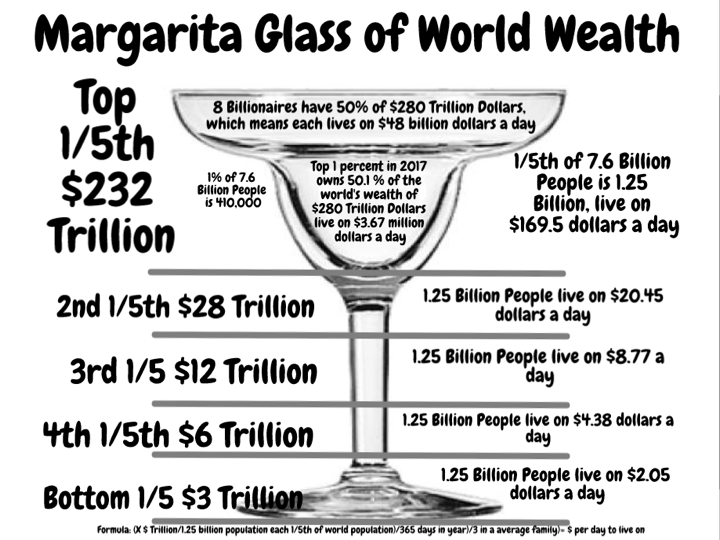
I did an experiment and August 29 2016 and added ten older articles to Academic.edu. Next day by analytics jumped

YOUTUBES
-
Quantum Storytelling: Blacksmithing Art in the Quantum Age
Quantum Storytelling: Blacksmithing Art in the Quantum Age, presents David M. Boje's "Quantum Storytelling" approach. This film ... -
7 Ethics Workshop 1-6-2011 D. Boje-Pt 2
January 6-7, 2011: David Boje, Bill Daniels Fellow in Ethics and Professor of Management at New Mexico State University, ... -
Blacksmith.mov
- by joenmsu
Dr. David M. Boje gives a tour of his Blacksmith shop in Las Cruces, New Mexico David M. Boje, Ph.D. Professor of Management, ... -
David Boje
- by David Boje
- Active 1 month ago
- 3 videos
I am a blacksmith artist and a professor at New Mexico State University. My specialty is quantum storytelling. I define quantum ...- CHANNEL
-
Tribal Wisdom and Storytelling: Drs. David Boje and Gregory Cajete
Module 4 features Dr. David Boje and Dr. Gregory Cajete. Boje discusses the differences between indigenous ways of storytelling ... -
Boje - Leadership is Theatre
- by David Boje
Professor David Boje does leadership is theatre training. The play "Myth of Starving Artist' is a bit of Boalian Image Theatre to ... -
6 Ethics Workshop 1-6-2011 D. Boje-Pt 1
January 6-7, 2011: David Boje, Bill Daniels Fellow in Ethics and Professor of Management at New Mexico State University, ...
Questions About Organizational Storytelling, Linguistic Sensemaking, Antenarrative?
David M. Boje is one of the leading scholars of organizational storytelling. I encountered large bodies of his work while in my PhD program, and I must admit it takes me an enormous amount of effort and brain power to wrap my head around his research and concepts. But he has a prodigious Web presence, so there’s no lack of material to try and understand.
An Antenarrative website is in the works with these sorts of questions::
- Does restory unearth submerged narrative/antenarrative patterns?
- Derrida and deconstruction vs storytelling and antenarrative?
- What academic pursuits have been facilitated by antenarrative based story analysis?
- How do we explain zen koans in linguistic or antenarrative terms?
- End and means, is an END an ANTEnarrative or not?
- The limits of language and sensemaking?
- What is NOT an antenarrative ?!?
- Experimental methods for antenarrative research?
- What is the difference between story and narrative?
The concept of “antenarrative” is one of Boje’s most significant contributions to organizational storytelling research.
Antenarrative is defined as a ‘bet’ on shaping the future, and a ‘before’ a full blown stable narrative has been constructed.
For first use of term ‘antenarrative’ see: Boje, D. M. 2001. Narrative Methods for Organizational and Communication Research. London: Sage.
Antenarrative is defined as “non-linear, incoherent, collective, unplotted, and pre-narrative speculation, a bet, a proper retrospective narrative with Beginning, Middle, and End (BME) can be constituted” (Boje, 2001: 1). Antenarratives are “in the middle” and “in-between” (Boje, 2001: 293) refusing to attach linear BME coherence. Whereas, most BME narratives and narrative fragments are retrospective (backward-looking) antenarratives are more often prospective (forward-looking). BME Narratives must achieve coherence, developmental plots required by narrative theorists (Gabriel, 2000:20, 22; Czarniawska, 1997: 79, 98; 1998: vii, 2).
Routledge is releasing the 2011 book: Storytelling and the Future of Organizations: An Antenarrative Handbook, David M. Boje, Ph.D., Editor
See Breakdown of Ethics Publications:
| Boje's Journal Articles on Ethics | Boje's Books & Chapters on Ethics |
|---|---|
Click on links to go directly to that section
WORKSHOPS: |
|
Click for access to recent article applying storytelling to leadership (with Carl Rhodes). |
Boje's focus is on study of ethics, critical theory ethics, feminism, and power of language, discourse, and storytelling and antenarratives in organizations (see Caling All Storytellers). His reputation corporate social responsibility ethics in academia and industry is widely known and respected in the
|
|---|---|
 |
|
|
David PHOTOGRAPHY We could all learn a few things from Dr. David What David discovered has impacted businesses, entrepreneurs, students and public administration in an increasingly positive way. “As a university leader, I am provocative, and try to stand up for the underdog,” says David, who holds an Endowed Bank of America Professorship within the College of Business at New Mexico State University. “I do what is called critical storytelling, where I seek to balance the official narratives of power with the living stories of the little people – often left out of history.” David’s research and work is vast, creative and utilized around the world and his reputation in academia and industry is widely known throughout the United States and internationally. As an international scholar in the areas of narrative, storytelling, postmodern theory and critical ethics of answerability, David has published nearly 100 articles in journals, including Management Science, Administrative Science Quarterly, Academy of Management Journal, Academy of Management Review and the International Journal of Organization Studies. David has also been awarded prestigious titles, including an Arthur Owens Professorship in Business Administration in the Management Department at NMSU, University and College Teacher of the Year four times at Loyola Marymount and a Creative Scholar Award at NMSU in 2008. “My greatest honor is riding my horse, Silverado, and staying in the saddle,” David says. When he is not riding, he is researching, learning and teaching with the same wit and humor that motivates his students and colleagues. David created an ‘antenarrative’, or a bet on what is shaping the future before it becomes one more fossilized narrative. “An ante is a bet and it’s a before,” David explains. “My focus is storytelling, how it shapes the past and future in business, public administration and arts entrepreneurship.” David got involved in his profession when he noticed in his quantitative research there was a need for stories to make sense of the data, and to make an interesting write-up. “As I started treating storytelling as a methodology of inquiry I discovered it is really applicable to qualitative and quantitative. You need storytelling to put facts and metaphors, or models, together into a theory.” David’s recent book, Storytelling Organizations, explores the stories people tell themselves and others at work. Instead of focusing on understanding stories about what happened “once upon a time, a long time ago” within an organization, David takes a different approach by seeing what people are telling themselves about the future. His interest focuses on how stories interplay with needs to stay within ethical and emotional comfort zones, and how multiple narratives emerge and evolve in rapidly changing situations. “At age 61, I notice I spend more time helping other faculty and students around the world develop their storytelling methods, theory and research projects,” David says. “My biggest influence was to look at how storytelling is a telling between the lines, where the reader is expected to fill in the blanks. Instead of once upon a time telling, looking at the complex collective dynamics of many storytellers has been my main contribution.” To David, a company’s motto, architecture of corporate headquarters and even the business strategy all become part of the organizational story. Studying the story then becomes a new and fertile way into understanding strategy. Once a story is understood, David looks at ‘restorying’ or a way to take a narrative which is negative, distorted or unfair and find a more truthful and affirmative alternative. This simple but effective technique can be used by businesses and organizations to change the future of their story. David is actively involved in Talking Stick, a project three years in the works that shows collective storytelling processes are being used to improve the creative economy of the arts and culture organizations in Southern New Mexico. David also actively worked on a What’s Art? Exploring the Creative Economy of Southern New Mexico Conference held October 2nd and 3rd, 2009 at Alma de Arte Charter School and the Pioneer Women’s Park in Las Cruces. David, who met Professor Grace Ann Rosile at a conference, applied to NMSU so the two could pursue their careers and raise their Arabian horses. Currently, David is working on a new book, Storytelling the Future of Organization: Antenarrative Handbook. “It’s an amazing challenge to theorize and study ‘storytelling the future’. Most narrative work has been about the past, and using that to extrapolate what the future might be. But such linear projections are not very accurate. We are looking at some alternative ways to story tell the future,” David says. |
On average,
Professor Boje's articles and books are cited
586 times by other scholars, with an average of 21.7 cites per item. By last count, David Boje had garnered 3565 total citations to his research (Citation analysis conducted on February 18, 2010 on Google Scholar). His most cited work (routinely cited on average by
scholars 690 times) is: Boje, D. M. 1991. "The storytelling organization: A study of storytelling
performance in an office supply firm." Administrative Science
Quarterly, Vol. 36: pp.106-126.
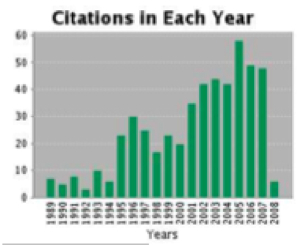
Dec 28 2012 results:

See Full Google Scholar Publishing profile
David’s total number of citations (3565 times) exceeds the average number of citations for the Organization Behavior/Management faculty at the top-ranked US school: a study of total citations at 51 major public and private business schools whose faculty had PhDs and as ranked in BusinessWeek, US News and World Report, and the Financial Times, showed that the University of California-Berkeley topped the list of most-cited faculty with its OB/Management faculty having 1499 life-time citations on average by over50%.
His international research reputation in storytelling stands upon several major contributions. His 1991 Administrative Science Quarterly article empirical study introduced stories how stories as the chief sensemaking device of organizations, showed how they are rarely told with beginning, middle, and end, and instead are dispersed across conversation in tersely told fragments. His 1995 Academy of Management Journal article is an empirical study of Disney showed the relationship of official storytelling to workers’ counterstories, and that this is going on simultaneously across multiple sites where the meaning derived depends upon the network of story rooms one has participated in.
As a measure of his influence, David’s articles have been cited consistently longer than a decade since their publication. Indeed, his 1991 ASQ article, “Organizations as Storytelling Networks”, garnered over 690 citations; and his 1995 AMJ article, “Stories of the Storytelling Organization”, received over 515 citations. The citing half-life for the journal is the median age of the articles the journal cited in the current year. Half of the citations in the journal are to articles published within the citing half- life. A citation analysis reveals that for both ASQ and AMJ, the cited half-life of articles in the journal is less than 10 years. David’s articles in these top journals have been cited over twice as long a period as the average article in these journals. As an indicator of his abiding influence on storytelling and narrative, these two articles continue to be cited till today.
He is past division-chair of the Research Methods Division of the Academy of Management, and incoming President of the Board of Governors of the Standing Conference for Management and Organization Inquiry (http://sc-moi.ning.com/).
David is founding editor of Tamara Journal of Critical Organizaiton Studies (http://TamaraJournal.com). He is associate editor, and past editor (1989-2003) of the Journal of Organizational Change Management, associate editor (2003-2009).
Professor Boje served simultaneously on 17 editorial boards, some for as long as 20 years. On Dec 17th he turned 61, decided balance is important, and on January 22nd he stepped off of all editorial boards to focus on his writing and editing the Tamara Journal. He was an associate editor for International Journal of Qualitative Research in Organizations and Management (2005-2009). He served on Journal of Qualitative Research in Accounting and Management, Management Digest, Management Decision Journal, Journal of Management Inquiry, M@n@gement, Organization Studies (UK), Employee Responsibilities and Rights Jounal (ERRJ), EJ-Radical Organization Theory, Emergence: Complexity & Organization Journal and Management (http://emergence.org/), Management Spirituality & Religion (http://www.jmsr.com/board.html), Journal of Business and Society, Management Science Review (France), Open Management Journal (Bentham Publishers),Qualitative Research in Accounting & Management (QRAM), Meaning (in) Organizations Quarterly and is also on the international advisory board for the journal Critical Discourse Studies (http://www.tandf.co.uk/journals/titles/17405904.asp), and Journal of Management Studies & Research –IJMSR. David is also a member of the Scientific Committee of RSDG (Revue Sciences de Gestion), a Management Science journal published quarterly in English, French and Spanish) and Editorial Board of the Sage Encyclopedia of Case Study Research.
![]() 's recent books include Storytelling Organization (Sage, 2008, see http://storytellingorganization.com) Critical Theory for Business and Public Administration (2007, Information Age Press), The Passion of Organizing (with Brewis, Lindstead & O’Shea, Liber & Copenhagen Business School Press, 2006), and Darsø, L., Meisiek S. and Boje, D. (Eds.). Thin Book of ORGANISATIONAL THEATRE. Text and photo © 2007 Learning Lab Denmark, The Danish University of Education. Click here to download on line version of the Thin Book. His book, Narrative Research Methods for Communication Studies (Sage, 2001) is a widely used text in teaching qualitative methods to Ph.D. students. His books on postmodern theory of management and organization continue to be widely cited: Managing in the Postmodern World: America's Revolution Against Exploitation (1993, 2000 with Bob Dennehy) and Postmodern Management and Organizational Theory (1996 with Robert Gephart & Tojo Thatchenkery). Theatres of Capitalism is forthcoming (SF, CA: Hampton Press). Information online at http://business.nmsu.edu/%7EdBoje/theatrics/theatrics.htm).
's recent books include Storytelling Organization (Sage, 2008, see http://storytellingorganization.com) Critical Theory for Business and Public Administration (2007, Information Age Press), The Passion of Organizing (with Brewis, Lindstead & O’Shea, Liber & Copenhagen Business School Press, 2006), and Darsø, L., Meisiek S. and Boje, D. (Eds.). Thin Book of ORGANISATIONAL THEATRE. Text and photo © 2007 Learning Lab Denmark, The Danish University of Education. Click here to download on line version of the Thin Book. His book, Narrative Research Methods for Communication Studies (Sage, 2001) is a widely used text in teaching qualitative methods to Ph.D. students. His books on postmodern theory of management and organization continue to be widely cited: Managing in the Postmodern World: America's Revolution Against Exploitation (1993, 2000 with Bob Dennehy) and Postmodern Management and Organizational Theory (1996 with Robert Gephart & Tojo Thatchenkery). Theatres of Capitalism is forthcoming (SF, CA: Hampton Press). Information online at http://business.nmsu.edu/%7EdBoje/theatrics/theatrics.htm).
His 2001 Narrative Methods book (292 citations) invents the term, antenarrative, the double meaning of a pre-story and a bet that it can transform behavior. His 2005 co-authored article in Leadership Quarterly is a contribution of story to ways leaders in the fast food industry are socially fashioned. His 2008 co-authored article in Critical Discourse Studies is how stories of Sam Walton continue in annual reports, long after his death. In a series of articles Boje traces the shifts in story sensemaking and antenarrating of the Enron Corporation. His work on Nike’s storytelling of its labor practices is widely cited. In sum, his story research work is considered foundational in leadership, ethics, postmodern, poststructral, discourse, feminism, labor process, and communication studies. His reputation for storytelling contributions in academia and industry is widely known and respected in the United States and internationally. Professor Boje continues to have an active presence in international scholarship. He was keynote speaker at the Discourse as well as Storytelling conferences in the United Kingdom, and has been a visiting scholar/speaker at universities in the United States (e.g., Rhode Island, CA, CO), in Europe (Netherlands, France, Switzerland, Austria, and the United Kingdom) as well as down under (Australia, Tasmania, & New Zealand).
Twenty years have passed since Leavitt, Pondy and Boje’s seminal Readings in Managerial Psychology 4th edition (1988) put together a representative collection of articles on the subject and we believe that the time is ripe to attempt a current ‘take’ on managerial psychology. Handbook of Managerial Psychology (3 Volumes); Editor(s): Yochanan Altman (London Metropolitan University), Frank Bournois (Université Paris (Pantheon-Assas)) and David Boje (New Mexico State University); ISBN: 978-1-4129-4490-8; Publication date: February, 2008; Publisher: SAGE Publications, London.
A current
book project, Critical Theory for
Business and Public Administration Ethics (expected publication in 2007),
applies the critical theory work of
Professor
Boje continues to have an active presence in international scholarship. He was
keynote speaker at the Discourse as well as Storytelling conferences in the United
Kingdom, and has been a visiting scholar/speaker at universities in the United
States (e.g., Rhode Island), in Europe (Netherlands, France, Switzerland,
Austria, and the United Kingdom) as well as down under (Australia & New
Zealand).
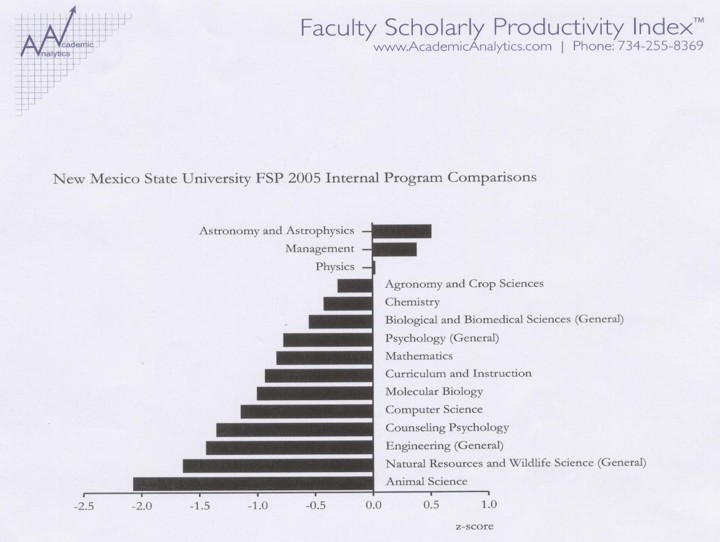
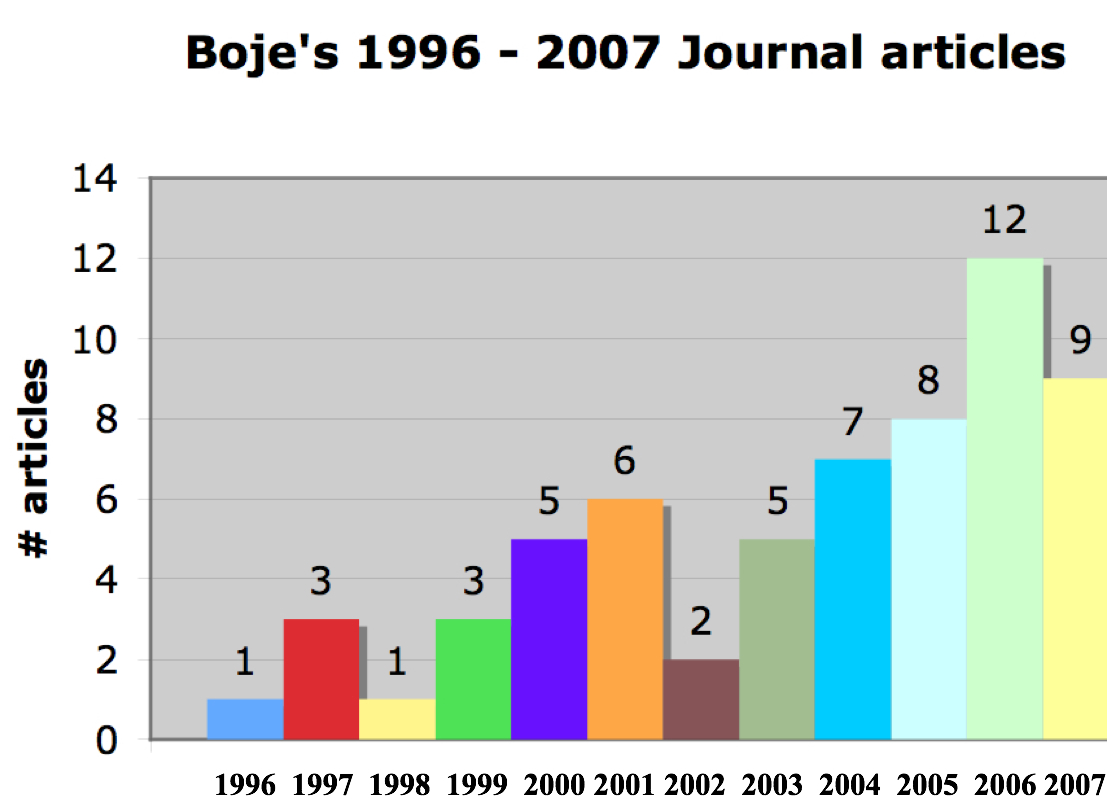
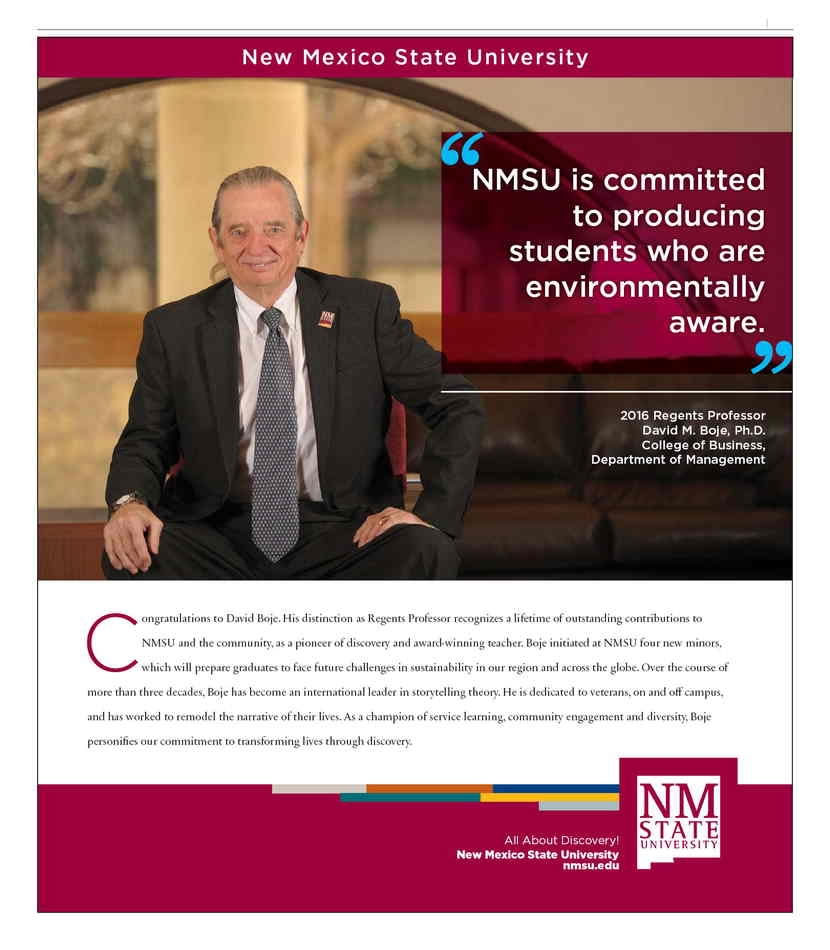
Return to main VITA page for Boje
 3:33
3:33 4:19
4:19

 2:50
2:50 9:22
9:22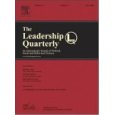
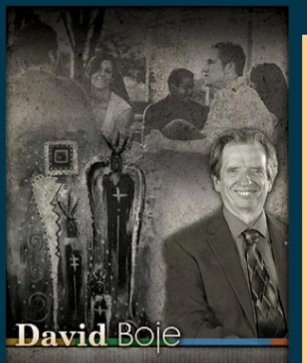


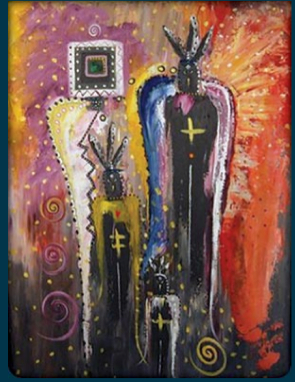 Painting by Virginia Maria Romero appears on back cover of the STORYTELLING ORGANIZATIONS book
Painting by Virginia Maria Romero appears on back cover of the STORYTELLING ORGANIZATIONS book